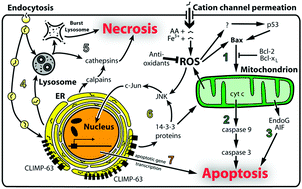Intracellular mechanisms of aminoglycoside-induced cytotoxicity
Abstract
Since introduction into clinical practice over 60 years ago,

Maintenance work is planned from 09:00 BST to 12:00 BST on Saturday 28th September 2024.
During this time the performance of our website may be affected - searches may run slowly, some pages may be temporarily unavailable, and you may be unable to access content. If this happens, please try refreshing your web browser or try waiting two to three minutes before trying again.
We apologise for any inconvenience this might cause and thank you for your patience.
* Corresponding authors
a
Oregon Hearing Research Center, Oregon Health & Science University, 3181 SW Sam Jackson Park Road, Portland, Oregon, USA
E-mail:
karasawa@ohsu.edu
Fax: +1 503-494-5656
Tel: +1 503-494-2373
Since introduction into clinical practice over 60 years ago,

 Please wait while we load your content...
Something went wrong. Try again?
Please wait while we load your content...
Something went wrong. Try again?
 Fetching data from CrossRef.
Fetching data from CrossRef.
This may take some time to load.
Loading related content
